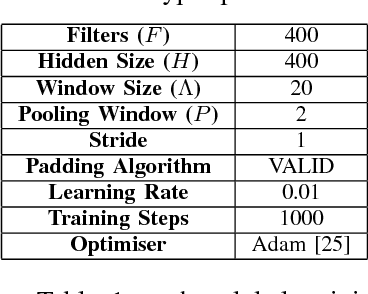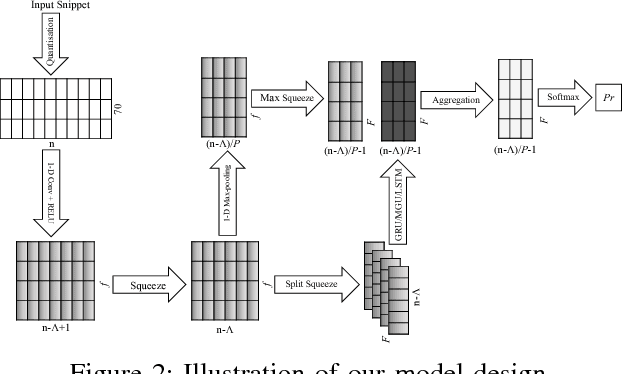Xinyu Fu
FedHGN: A Federated Framework for Heterogeneous Graph Neural Networks
May 16, 2023



Abstract:Heterogeneous graph neural networks (HGNNs) can learn from typed and relational graph data more effectively than conventional GNNs. With larger parameter spaces, HGNNs may require more training data, which is often scarce in real-world applications due to privacy regulations (e.g., GDPR). Federated graph learning (FGL) enables multiple clients to train a GNN collaboratively without sharing their local data. However, existing FGL methods mainly focus on homogeneous GNNs or knowledge graph embeddings; few have considered heterogeneous graphs and HGNNs. In federated heterogeneous graph learning, clients may have private graph schemas. Conventional FL/FGL methods attempting to define a global HGNN model would violate schema privacy. To address these challenges, we propose FedHGN, a novel and general FGL framework for HGNNs. FedHGN adopts schema-weight decoupling to enable schema-agnostic knowledge sharing and employs coefficients alignment to stabilize the training process and improve HGNN performance. With better privacy preservation, FedHGN consistently outperforms local training and conventional FL methods on three widely adopted heterogeneous graph datasets with varying client numbers. The code is available at https://github.com/cynricfu/FedHGN .
MECCH: Metapath Context Convolution-based Heterogeneous Graph Neural Networks
Nov 23, 2022Abstract:Heterogeneous graph neural networks (HGNNs) were proposed for representation learning on structural data with multiple types of nodes and edges. Researchers have developed metapath-based HGNNs to deal with the over-smoothing problem of relation-based HGNNs. However, existing metapath-based models suffer from either information loss or high computation costs. To address these problems, we design a new Metapath Context Convolution-based Heterogeneous Graph Neural Network (MECCH). Specifically, MECCH applies three novel components after feature preprocessing to extract comprehensive information from the input graph efficiently: (1) metapath context construction, (2) metapath context encoder, and (3) convolutional metapath fusion. Experiments on five real-world heterogeneous graph datasets for node classification and link prediction show that MECCH achieves superior prediction accuracy compared with state-of-the-art baselines with improved computational efficiency.
Retrieving and ranking short medical questions with two stages neural matching model
Nov 16, 2020



Abstract:Internet hospital is a rising business thanks to recent advances in mobile web technology and high demand of health care services. Online medical services become increasingly popular and active. According to US data in 2018, 80 percent of internet users have asked health-related questions online. Numerous data is generated in unprecedented speed and scale. Those representative questions and answers in medical fields are valuable raw data sources for medical data mining. Automated machine interpretation on those sheer amount of data gives an opportunity to assist doctors to answer frequently asked medical-related questions from the perspective of information retrieval and machine learning approaches. In this work, we propose a novel two-stage framework for the semantic matching of query-level medical questions.
MAGNN: Metapath Aggregated Graph Neural Network for Heterogeneous Graph Embedding
Feb 05, 2020



Abstract:A large number of real-world graphs or networks are inherently heterogeneous, involving a diversity of node types and relation types. Heterogeneous graph embedding is to embed rich structural and semantic information of a heterogeneous graph into low-dimensional node representations. Existing models usually define multiple metapaths in a heterogeneous graph to capture the composite relations and guide neighbor selection. However, these models either omit node content features, discard intermediate nodes along the metapath, or only consider one metapath. To address these three limitations, we propose a new model named Metapath Aggregated Graph Neural Network (MAGNN) to boost the final performance. Specifically, MAGNN employs three major components, i.e., the node content transformation to encapsulate input node attributes, the intra-metapath aggregation to incorporate intermediate semantic nodes, and the inter-metapath aggregation to combine messages from multiple metapaths. Extensive experiments on three real-world heterogeneous graph datasets for node classification, node clustering, and link prediction show that MAGNN achieves more accurate prediction results than state-of-the-art baselines.
CRNN: A Joint Neural Network for Redundancy Detection
Jun 04, 2017



Abstract:This paper proposes a novel framework for detecting redundancy in supervised sentence categorisation. Unlike traditional singleton neural network, our model incorporates character-aware convolutional neural network (Char-CNN) with character-aware recurrent neural network (Char-RNN) to form a convolutional recurrent neural network (CRNN). Our model benefits from Char-CNN in that only salient features are selected and fed into the integrated Char-RNN. Char-RNN effectively learns long sequence semantics via sophisticated update mechanism. We compare our framework against the state-of-the-art text classification algorithms on four popular benchmarking corpus. For instance, our model achieves competing precision rate, recall ratio, and F1 score on the Google-news data-set. For twenty-news-groups data stream, our algorithm obtains the optimum on precision rate, recall ratio, and F1 score. For Brown Corpus, our framework obtains the best F1 score and almost equivalent precision rate and recall ratio over the top competitor. For the question classification collection, CRNN produces the optimal recall rate and F1 score and comparable precision rate. We also analyse three different RNN hidden recurrent cells' impact on performance and their runtime efficiency. We observe that MGU achieves the optimal runtime and comparable performance against GRU and LSTM. For TFIDF based algorithms, we experiment with word2vec, GloVe, and sent2vec embeddings and report their performance differences.
An Improved System for Sentence-level Novelty Detection in Textual Streams
Apr 30, 2016


Abstract:Novelty detection in news events has long been a difficult problem. A number of models performed well on specific data streams but certain issues are far from being solved, particularly in large data streams from the WWW where unpredictability of new terms requires adaptation in the vector space model. We present a novel event detection system based on the Incremental Term Frequency-Inverse Document Frequency (TF-IDF) weighting incorporated with Locality Sensitive Hashing (LSH). Our system could efficiently and effectively adapt to the changes within the data streams of any new terms with continual updates to the vector space model. Regarding miss probability, our proposed novelty detection framework outperforms a recognised baseline system by approximately 16% when evaluating a benchmark dataset from Google News.
 Add to Chrome
Add to Chrome Add to Firefox
Add to Firefox Add to Edge
Add to Edge